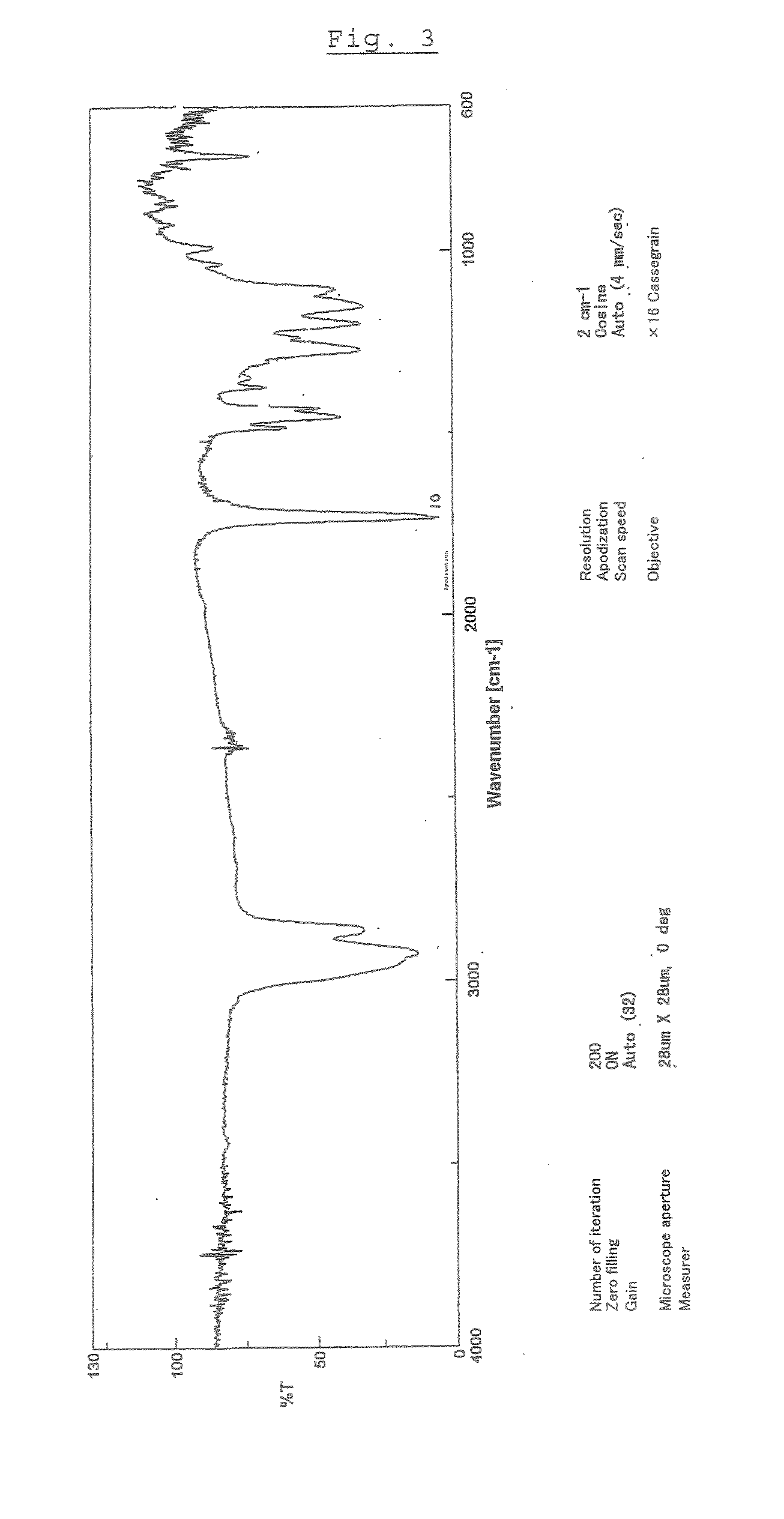Thermoplastic Resin Composition, Optical Film, And Process For Producing Film
a technology of thermoplastic resin and composition, applied in the direction of instruments, polarising elements, other domestic objects, etc., can solve the problems of low heat resistance of acetate films such as triacetyl acetate films, high coefficient of photoelasticity, and deformation, and achieve excellent compatibility and transparency, good wavelength dispersion properties, and low birefringence
- Summary
- Abstract
- Description
- Claims
- Application Information
AI Technical Summary
Benefits of technology
Problems solved by technology
Method used
Image
Examples
polymer synthesis example 1
[0324]In 8.02 g of methylene chloride, a styrene / maleic anhydride copolymer (Dylark D232, 0.699 g) was dissolved, then 0.0438 g of aniline was added and they were stirred at room temperature for 1 hour. The reaction solution was introduced into methanol to perform solidification and precipitation to give the resin (P1). The resulting IR spectrum and 1H-NMR spectrum are shown in FIGS. 1 and 2.
polymer synthesis example 2
[0325]In a reaction vessel purged with nitrogen, 50 g of 8-methoxycarbonyl-8-methyltetracyclo[4.4.0.12,5.17,10]-3-dodecene represented by the above formula (Im), 2.3 g of 1-hexene as a molecular weight modifier and 100 g of toluene were placed, and they were heated to 80° C. Then, 0.09 ml of a toluene solution of triethylaluminum (0.6 mol / l) and 0.29 ml of a toluene solution of methanol-modified WCl6 (0.025 mol / l) were added, and reaction was performed at 80° C. for 3 hours to give the polymer. Subsequently, the resulting ring-opened copolymer solution was placed in an autoclave, and 100 g of toluene was further added. Then, RuHCl(CO)[P(CH5)]3 as a hydrogenation catalyst was added in an amount of 2500 ppm based on the amount of the monomers charged, and the hydrogen gas pressure was adjusted to 9 to 10 MPa, followed by reaction at 160 to 165° C. for 3 hours. After the reaction was completed, the reaction product was precipitated in a large amount of a methanol solution to give the h...
polymer synthesis example 3
[0326]In a reaction vessel purged with nitrogen, 20 g of 8-methoxycarbonyl-8-methyltetracyclo[4.4.0.12,5.17,10]-3-dodecene shown in Polymer Synthesis Example 2, 5.0 g of 5-methoxycarbonyl-5-methylbicyclo[2.2.1]hept-2-ene represented by the above formula (IIm), 1.2 g of 1-hexene as a molecular weight modifier and 86.3 ml of toluene were placed, and they were heated to 80° C. Then, 0.15 ml of a toluene solution of triethylaluminum (0.61 mol / l) and 0.47 ml of a toluene solution of methanol-modified WCl6 (0.025 mol / l) were added, and reaction was performed at 80° C. for 3 hours to give the polymer. Subsequently, the resulting ring-opened copolymer solution was placed in an autoclave, and 86.3 ml of toluene was further added. Then, RuHCl (CO)[P(C6H5)]3 as a hydrogenation catalyst was added in an amount of 2500 ppm based on the amount of the monomers charged, and the hydrogen gas pressure was adjusted to 9 to 10 MPa, followed by reaction at 160 to 165° C. for 3 hours. After the reaction w...
PUM
| Property | Measurement | Unit |
|---|---|---|
| wavelength | aaaaa | aaaaa |
| wavelength | aaaaa | aaaaa |
| wavelength | aaaaa | aaaaa |
Abstract
Description
Claims
Application Information
 Login to View More
Login to View More - R&D
- Intellectual Property
- Life Sciences
- Materials
- Tech Scout
- Unparalleled Data Quality
- Higher Quality Content
- 60% Fewer Hallucinations
Browse by: Latest US Patents, China's latest patents, Technical Efficacy Thesaurus, Application Domain, Technology Topic, Popular Technical Reports.
© 2025 PatSnap. All rights reserved.Legal|Privacy policy|Modern Slavery Act Transparency Statement|Sitemap|About US| Contact US: help@patsnap.com



